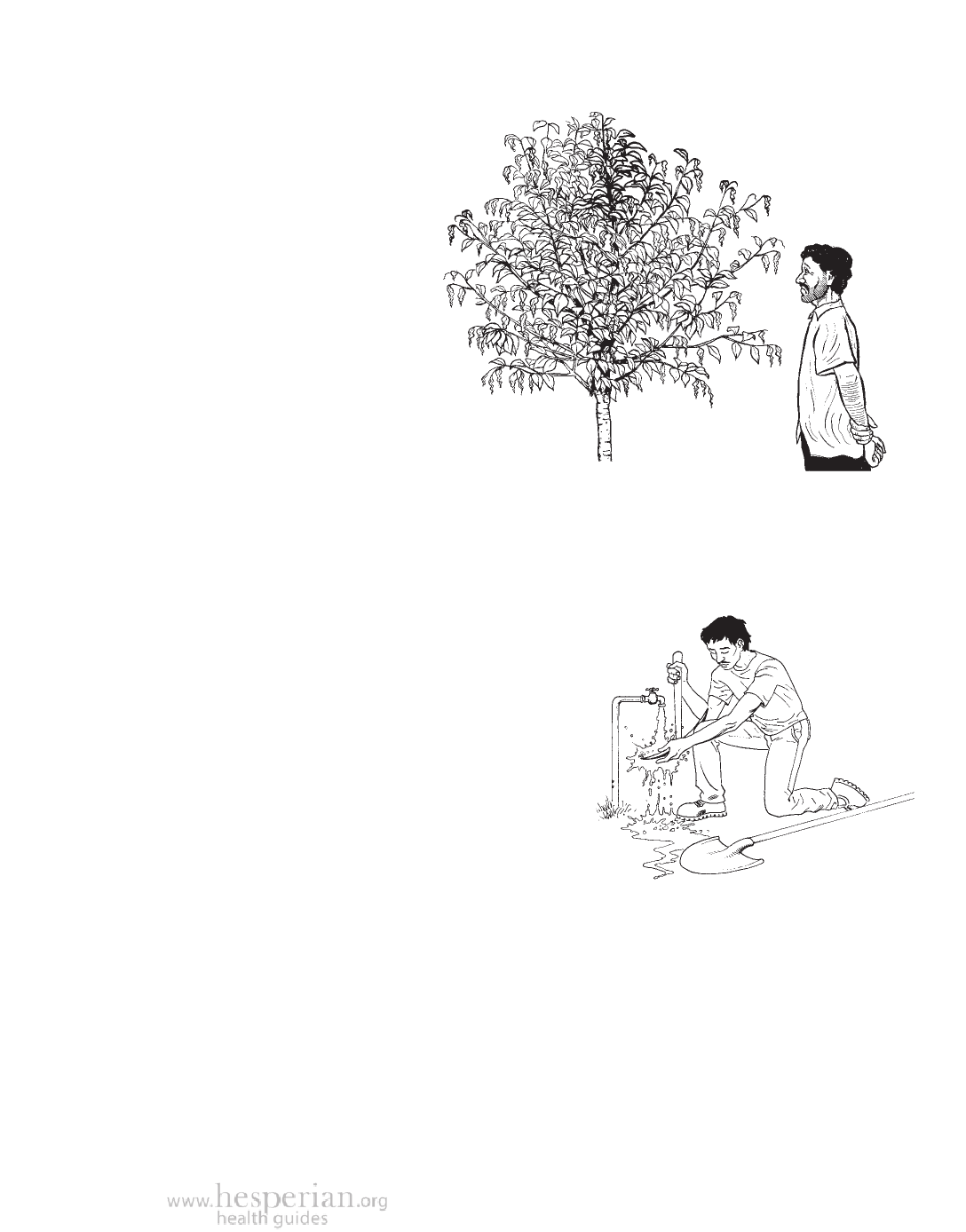
Plant diseases 301
Plant Diseases
Plant diseases can be recognized
by their effects on plants, such
as making leaves change in
color, causing leaves to wilt, or
making parts of the plant grow
in unusual ways. Plant diseases
may be caused by a fungus, a
bacteria, or a virus. All of them
can be controlled with natural
methods.
Plant diseases are best prevented by
maintaining healthy soils and following the
other principles for sustainable farming
(see page 281). When you are certain a disease is affecting your crop,
you can prevent the disease from spreading to other plants.
• Destroy diseased plants. Infected plants can pass diseases or pests to
future crops. For diseases that kill the entire plant or severely reduce
production, the entire plant should be removed and burned at the first
sign of disease. Do not compost it, because some plant
diseases survive composting.
• Clean tools used on diseased plants.
Plant diseases can be spread when your
body, tools, and clothing touches infected
plants and then touches healthy plants.
Wash everything with warm soapy water
before touching healthy plants.
• Control sap suckers. Many plant diseases
are carried between plants by sap
sucking insects. See page 298 for natural
pesticides to use against sap suckers.
• Milk kills fungus diseases, caterpillar eggs,
and spider mites. Mix 1 liter of milk with 15 liters of water and spray
on your crops. For fungal diseases, repeat after 10 days. For caterpillar
eggs, repeat after 3 weeks.
• Ashes kill fungus diseases. Planting ashes together with seeds will
prevent some fungus. For late blight of tomato and potato crops, spray
crops with a strained mix of ashes and water.
A Community Guide to Environmental Health 2012